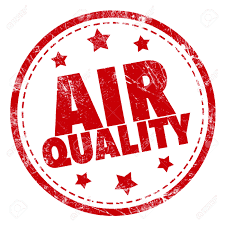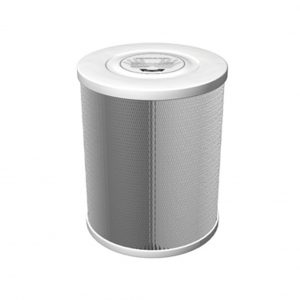Intro
Indoor air pollution can be a very critical health risk. According to research done by the Environmental Protection Agency, indoor air is usually 2-5 times more polluted compared to the one outdoors. At times, it can be much more polluted than this. Combining this statistic with the fact that the average Canadian spends over 90% of his/her time indoors, inside air quality is something that cannot be ignored.
We must pay much regard to the fact that there are numerous sources of pollution that lower the quality of our indoor air. “Indoor air pollution” is a broad term that covers a large number of unhealthy materials which can have distinct effects on our bodies. This piece will examine some of the most common sources of air pollution in Canadian and American homes. For each source, we will talk about three different things: what the pollutants are, their effects on humans, and how you can deal with them. The aim of this article is to help you have a pollution free home.
Sources of Indoor Air Pollution
The following are common causes of indoor air pollution and how to prevent them:
-
Biological Sources
You are not the only living being that calls your apartment or house a home. There are other living things like pets, mold, insects, and other living organisms residing at your place too. These organisms have the potential of causing serious indoor air quality problems.
Since this is a broad topic, the health effects are quite several. Contaminants from biological sources can cause a lot of harm on your body. They can cause irritation of the eyes, lungs, throat, and nose. They can also lead to fevers, breathing problems, and many different diseases. The many reasons why you would not like bugs, mildew, or mold around your home – their cause of indoor air pollution should be one of them.
There isn’t a universal way of how you can get rid of these sources of indoor air pollution; however, there are a few steps you can take to minimize it. For example, moisture facilitates the growth of mildew and mold. You should, therefore, reduce the amount of moisture content in your house by ensuring your plumbing system is not leaking or no unwanted water intrusion is present. You should also make use of ventilators and exhaust fans if you have them. Since mold spores exist both indoors and outdoors, indoor air quality testing for mold is a great way to determine if the indoor mold spore count is above the norm.
Vacuum and dust your home on a regular basis. Although, dusting your home will only disturb the surface dust and make it air-born, so make sure to suck up the dust with a vacuum or an air purifier. Wash your bedding and rugs to kill mites that love to reside there. Generally, keeping your house clean helps to keep away cockroaches and pests. A point to note here is that pesticides cause indoor air pollution. Hence, you should avoid using chemical pesticides when there are safer/natural methods to be incorporated.
-
Organic Gases
“Volatile Organic Compounds”, or as commonly called, “Organic gases”, is a term used to refer to gases emitted from various sources at room temperature. Some of the most common sources of VOCs include: glue, hair sprays, nail polish, paint, printers and photocopiers, cleaning supplies, some building material, pesticides, and permanent markers. Looking at this, your home most likely has numerous VOC sources. Therefore, being aware of them and their associated health effects is essential.
Effects of organic gases are several and range from irritation of the nose, eyes, and throat, to nausea and dizziness. They can also cause other serious health complications such as damage to the central nervous system, and cancer. The effects highly depend on the levels of toxicity of specific gases.
The best way to reduce the concentration of VOCs is to store them outside, where applicable. You should also not buy excess quantities of VOC-producing products like cleaning supplies. This makes sure that they are not just sitting around your home and emitting gases. In addition, you should use them in well ventilated areas, and make sure to follow manufacturer’s instructions – most of them offer advice on how you can reduce exposure to the gases.
-
Formaldehyde
Formaldehyde is an organic component that exists as a gas at normal temperature. It has a distinctive pungent smell, but it is invisible. Its common sources include: textiles, glues, and environmental tobacco smoke. However, the major source is availability of pressed wood with urea-formaldehyde resins in furniture and building materials. The furniture category includes hardwood, plywood paneling, medium-density fiberboard, and particle board. Urea-formaldehyde foam insulation, a significant source of formaldehyde pollution, was commonly used to insulate homes in the 1970s.
In high concentrations, formaldehyde can lead to irritation of the nose, throat, and eyes. It can also cause fatigue, coughing, and rashes. It is also one of the major causes of cancer and other serious health conditions.
If you do not have urea-formaldehyde foam insulation in your home, then you probably have very low levels of formaldehyde in your home. This is a good thing. To reduce the level of formaldehyde, moderate the temperature, and humidity levels in your home. In the future, consider using exterior-grade pressed wood product. They release little formaldehyde since they have distinct resins.
-
Second Hand Smoke – Environmental Tobacco Smoke
Chemicals emitted from the smoking of tobacco stay in the air long after the cigarette, pipe, or cigar goes out. These chemicals are later inhaled by unsuspecting individuals. The health risks of smoking are well known, and do not need a deep discussion. Second hand tobacco smoke has similar risks as to those associated with direct smoking. Some of these risks include: heart disease, lung ailments, lung cancer, and general irritation of the nose, throat, lungs, and eyes. It could also aggravate asthma and cause other serious health risks.
Controlling this source of indoor air pollution is quite easy – you should simply not smoke in your home and do not let others smoke in your home. By doing this, you could completely eradicate a major source of indoor air pollution completely.
-
Pesticides
The major role of pesticides is to kill. Therefore, you would not want to be frequently inhaling them in your residence. Pesticides release numerous chemicals into the air. Having pesticide containers in the house, is one of the primary sources of this pollutant. However, pesticides can be tracked into the house, from the yard, by their users.
Pesticides can irritate the throat, eyes, and the nose. They can also cause damage to kidneys and the central nervous system. Moreover, they are highly linked to cancer.
So as to minimize the level of pesticides in your home, you should avoid using chemical pesticides at all costs. When using them, follow the label instructions, and do not use them in excess amounts. Also, after every use, make sure to ensure the area is properly ventilated. When purchasing pesticides, don’t buy more than you need. This will ensure that you do not have any unused pesticide sitting around your house, giving off fumes. If you have excess pesticides, consider storing it outside rather than indoors.
-
Respirable Particles
Respirable is derived from the word respire, which means to breathe. So, respirable particles entail matter that can easily be inhaled. Fireplaces, environmental tobacco, wood stoves, and kerosene heaters, are some of the most common contributors of respirable particles.
Just like many other indoor pollutants, respirable particles have the potential of causing irritation of the nose, throat, and eyes. They can also lead to ailments like bronchitis. Moreover, they can cause cancer as well.
Minimizing their availability can be successfully done through good maintenance of devices that cause them. Other methods include: not smoking indoors and ensuring proper ventilation. Homes without the aforementioned sources rarely have repairable particles, as long as they are properly ventilated.
-
Radon
Radon is a radioactive gas that is introduced into a homestead via the ground beneath it, the building materials that comprise your house, and well water. Radon is tasteless, odorless, and colorless. These attributes make it very dangerous as it is hard to know whether this gas really exists. Additionally, it produces no immediate symptoms, meaning that you will have no idea you are inhaling it. According to a study conducted by the Consumer Product Safety Commission (CPSC), radon is three times more prevalent in homes compared to the outdoors.
Inhaling radon leads to lung cancer. The Consumer Product Safety Commission (CPSC) states that it causes 7,000 – 30,000 lung cancer deaths each year. For those that smoke, radon exposure increases their risk of lung cancer even further. This is because radon can bind itself to the smoke and wedge itself in the lungs.
The good thing is that radon testing is inexpensive, efficient, and takes very little time to perform. It is also readily available and you can always contact a professional to help you do this.
-
Carbon Monoxide
Just like radon, carbon monoxide is tasteless, odorless, and colorless. This characteristics make this gas insidious too. Among the common sources of carbon monoxide include: environmental tobacco smoke, heaters, chimneys, gas stoves, and furnaces. Vehicles also produce carbon monoxide, so having an attached garage to your home increases the risks too.
Carbon monoxide mostly attacks your central nervous system and your blood stream too. Exposure to low levels of carbon monoxide leaves you feeling sluggish. Therefore, an inexplicable lack of energy should act as an early warning sign. Subjection to high levels of carbon monoxide, on the other hand, causes headaches, nausea, dizziness, and lack of coordination. Coming into contact with too much levels of carbon monoxide can be quite fatal.
Keeping the above mentioned carbon monoxide sources in good working condition and properly ventilated can minimize chances of carbon monoxide poisoning. You should also consider installing carbon monoxide detectors in your home. They are easy to find and quite cheap to purchase. They should be a critical accessory in each and every house.
-
Nitrogen Dioxide
Nitrogen dioxide has its main sources similar to those of carbon monoxide. The two also have almost the same health risks. In addition to this, nitrogen dioxide can aid to produce a rather harmful chemical, ozone. Unlike Carbon monoxide, nitrogen dioxide has a sharp smell that is easily detectable. It also has a reddish-brown color; hence, it is very easy to know whether or not this gas exists around your house.
Minimizing the levels of nitrogen dioxide can be done using the same techniques used to minimize carbon monoxide. Its sources ought to be removed or minimized to safe levels.
As this gas is easily noticeable, even without equipment help, it poses a lesser threat. Nevertheless, you should never take things for granted, especially when it comes to a dangerous chemical like this one.
-
Asbestos
Asbestos is a kind of magnesium silicate fiber. It was conventionally used in home construction due to its ability to resist fire and insulate the home. Due to the small nature of asbestos fibers, they can easily be inhaled by an individual unknowingly. In the modern days, the use of asbestos was banned by the federal government. Even those that are legal are rarely used. Asbestos, therefore, offers a larger risk to occupants of older houses rather than new ones.
Asbestos has no immediate symptoms. However, in the long term, it has the potential of causing lung cancer, mesothelioma, and abdominal cancer. It can also lead to asbestosis – a condition where its fibers lead to scarring in the lungs.
If your house has asbestos, it does not mean that it could cause harm to you. This is more so if the asbestos is of proper quality. As long as it is left undisturbed, it will rarely release fibers into the air. If you need to conduct operations in your home that might disturb the asbestos, then you should use professionals for the job. There are many indoor air quality testing companies in Ottawa and the surrounding areas who are equipped and certified to test your indoor air for asbestos fibers. If you are concerned about the amount of asbestos in your house, then the best action to take is to seal it off rather than removing it. Removing it could cause more asbestos to be released into the air.
If you would want the amount of asbestos in your house measured, you can either obtain an indoor air quality testing kit to do it yourself, or you can acquire professional services here.
Conclusion
As you might have realized, there are many sources of indoor air pollution. However, most of them can be fought through easy steps. In addition, some measure will aid to minimize multiple services for example by keeping indoor humidity levels low, and storing chemical products outside. By having the knowledge about the dangers of indoor air pollution and following the above stated advice, you can greatly improve your indoor air quality.
Lastly you can always contact Simon Air Quality for indoor air solutions. Not only do professional companies know what they are doing, but they have all the right indoor air quality testing equipment necessary for any situation/problem.










